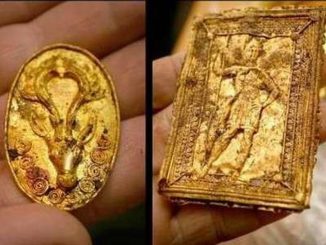Nestled amidst the sun-kissed landscapes of Crete, the remnants of Minoan palaces stand as silent witnesses to a bygone era of splendor and intrigue. These architectural marvels, dating back to the Bronze Age, hold within their labyrinthine corridors and grand chambers the secrets of a civilization shrouded in myth and mystery. From the legendary labyrinth of Knossos to the majestic ruins of Phaistos, the Minoan palaces continue to captivate the imagination of scholars and enthusiasts alike. Join us as we embark on a journey to unravel the enigma of these ancient structures and explore their pivotal role in shaping the cultural landscape of ancient Greece.

Architectural Splendor: The Minoan palaces, characterized by their intricate design and monumental scale, represent the zenith of Bronze Age architecture in the Aegean region. Built primarily from stone and timber, these palaces boasted sprawling complexes comprised of multiple wings, courtyards, and storerooms. One of the most iconic examples is the Palace of Knossos, with its sprawling layout and intricate frescoes depicting scenes of daily life and mythological narratives. These palatial complexes served as administrative centers, religious sanctuaries, and hubs of economic activity, reflecting the centralized nature of Minoan society. Moreover, their strategic location near fertile plains and natural harbors facilitated trade and cultural exchange, allowing the Minoans to flourish as a maritime power in the ancient Mediterranean.
Cultural Significance: Beyond their architectural grandeur, the Minoan palaces played a pivotal role in shaping the cultural identity of ancient Greece. As centers of political power and religious worship, these palaces served as focal points for communal gatherings, religious rituals, and artistic expression. The vibrant frescoes adorning their walls depict a myriad of motifs, ranging from scenes of bull-leaping and processions to depictions of deities and mythical beasts. These artistic masterpieces not only reflect the aesthetic sensibilities of the Minoans but also offer valuable insights into their religious beliefs and social practices. Moreover, the discovery of intricate artifacts such as the famous Phaistos Disc and Linear A tablets attests to the advanced level of cultural sophistication achieved by the Minoans, paving the way for future developments in writing and record-keeping in the ancient world.
Historical Legacy: The decline of the Minoan palaces around the 15th century BCE marked the end of an era, as seismic events such as earthquakes and invasions by foreign powers precipitated their downfall. Yet, their legacy endured through the annals of history, influencing subsequent civilizations and leaving an indelible mark on the cultural landscape of ancient Greece. The myths and legends surrounding figures such as King Minos and the Minotaur continue to captivate the imagination, inspiring countless works of art, literature, and scholarship. Moreover, the architectural innovations pioneered by the Minoans, such as the use of columnar architecture and light wells, would later influence the development of classical Greek architecture, leaving an enduring legacy that resonates to this day.
Conclusion:
In conclusion, the Minoan palaces stand as testament to the ingenuity, creativity, and cultural vibrancy of one of the ancient world’s most enigmatic civilizations. From their architectural splendor to their cultural significance, these palaces continue to fascinate and inspire, inviting us to delve deeper into the mysteries of the past. As we unravel the secrets of these ancient structures, we gain a greater appreciation for the rich tapestry of human history and the enduring legacy of civilizations long gone. So, let us continue to explore, discover, and marvel at the wonders of the ancient world, for therein lies the key to unlocking the mysteries of our collective heritage.


